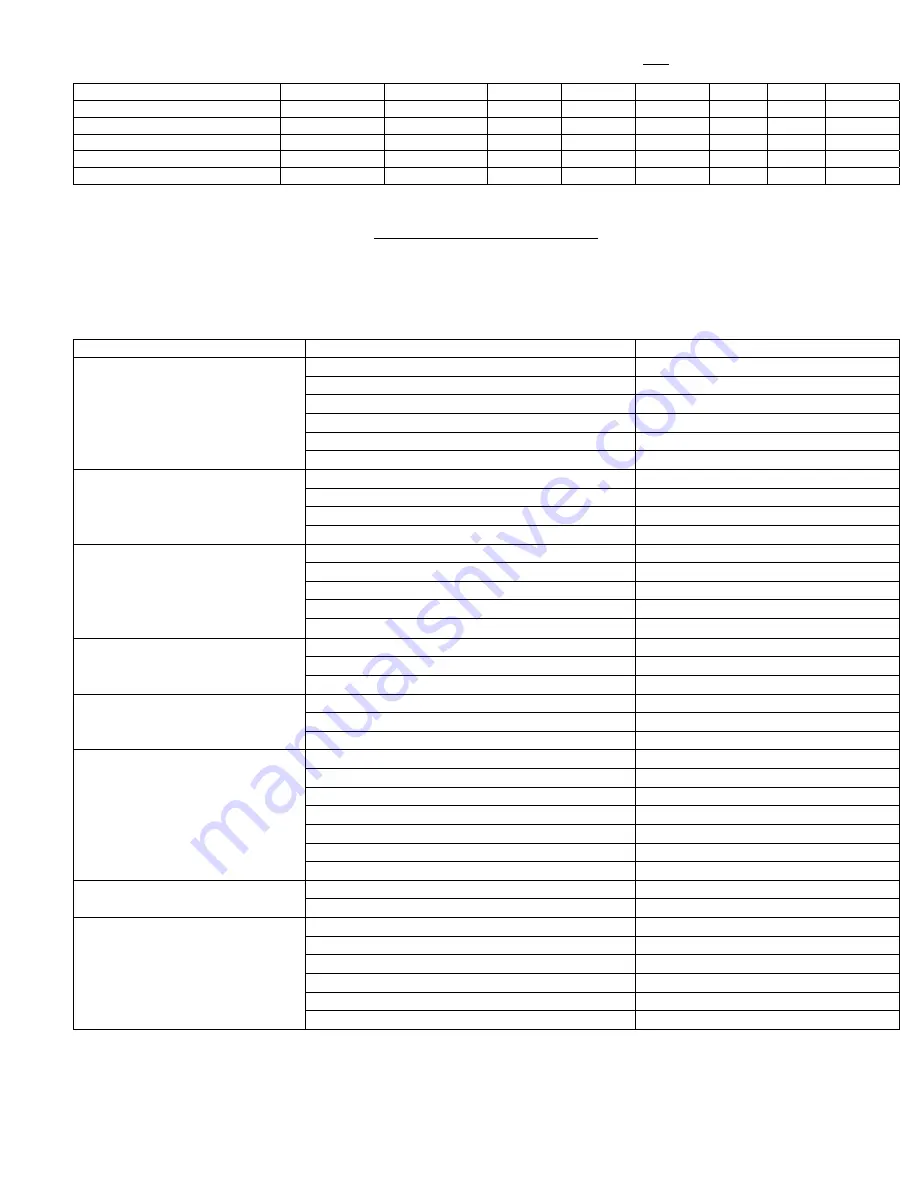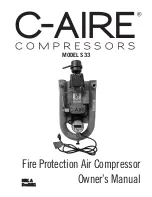
TORQUE CHART (INCH/LBS)
Determine pump type using suffix of model number (Example: V5180K30 uses a K30 pump.)
TROUBLESHOOTING
WARNING
-
Make sure you completely understand all of the safety warnings and operation of each system control
component before attempting any maintenance or repair. Always drain the tank pressure completely, make sure the
power cord is unplugged, and unit has time to cool before performing any maintenance or service operations.
PROBLEM
CAUSE
SOLUTION
Low discharge pressure
Air leaks
Correct air leaks
Restricted air intake
Clean or replace intake element
Loose/slipping belt(s)
Adjust belt tension
Compressor too small
Perform pump-up time test
Blown gasket
Replace head gaskets
Broken valves/worn rings
Replace valve/rings
Knocking
Loose pulley/flywheel
Tighten appropriate item
Loose belt(s)
Adjust belt tension
Lack of oil in crankcase
Add oil
Internal pump problem
Take pump in for service
Overheating
Poor ventilation
Relocate air compressor
Dirty cooling surfaces
Clean compressor
Incorrect flywheel rotation
Contact an electrician
Blown gasket(s)
Replace head gaskets
Broken valves
Replace valve/head gaskets
Excessive starting/stopping
Excessive air leaks
Correct air leaks
Unit too small for application
Add/replace air compressor
Air storage capacity too small
Add reserve air tank
Excessive belt wear
Motor pulley or flywheel out of alignment
Reposition pulley or flywheel
Flywheel/pulley wobble
Replace appropriate item
Improper belt tension
Adjust belt tension
Oil in discharge air or
oil blowing out of
crankcase vent
Wrong oil viscosity
Use correct type of oil
Improper flywheel rotation
Contact an electrician
Crankcase overfilled
Drain to proper oil level
Obstructed crankcase breather
Clean or replace breather
Inadequate ventilation
Relocate compressor
Restricted air intake
Clean or replace intake element
Worn piston rings
Take pump in for service
Water in crankcase
(Oil appears milky in color)
Infrequent cycling
Install crankcase heater
Incorrect or inferior oil
Use correct type of oil
Motor/compressor fails
to attain speed
Loose belts
Correct belt tension
Low voltage
Contact an electrician
Improper wiring
Contact an electrician or factory
Defective check valve
Replace check valve
Motor overload
Push motor reset
Inoperable relief valve
Replace pressure switch
NOTE: Reciprocating compressors consume a certain amount of oil under normal operation. If you are concerned
about your oil consumption, monitor and record oil consumption daily before consulting your dealer. When oil
consumption is normal and what appears to be milky oil is found in your lines, this is caused by small particles of oil,
along with water vapor, condensing in your air lines. To eliminate this problem: Air-Cooled Aftercoolers, Refrigerated
Dryers
and
Filters
are
available
through
your
dealer.
Pump Type
K17/K18
K24/K25
K28
K30
K35
K50
K60
K100
Head Bolts
243
243
347
347
347
694
347
694
Cylinder Bolts
182
182
330
330
330
521
330
521
Bearing Carrier Bolts
130
130
130
130
130
165
165
165
Connecting Rod Bolts
121.5
121.5
121.5
173.6
173.6 217
217
199.7
Flywheel 382
382
477
477
477
607
607
694


























